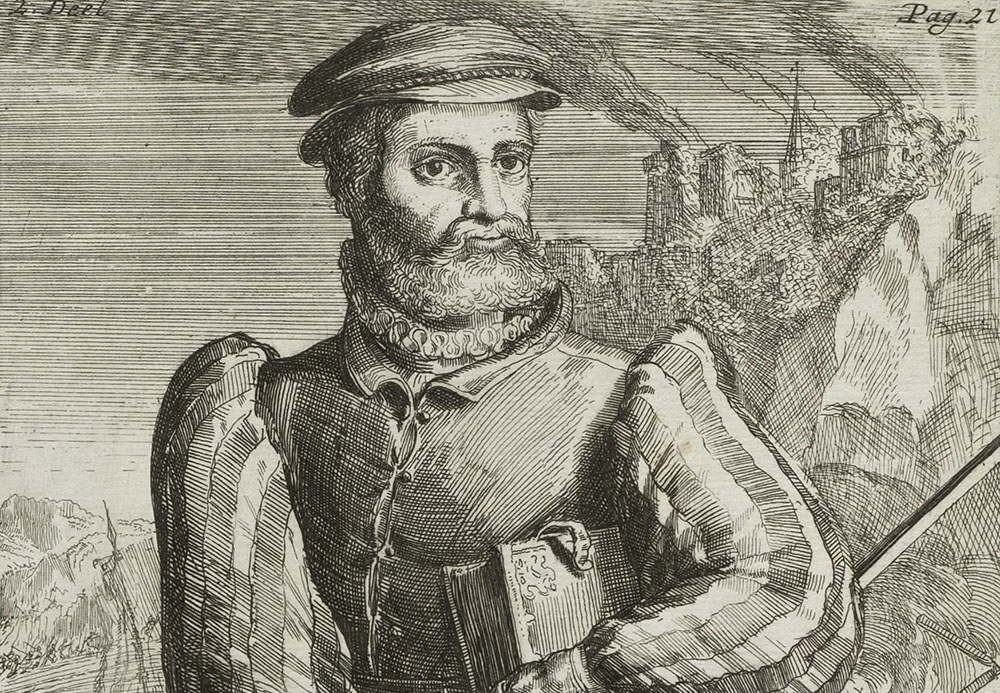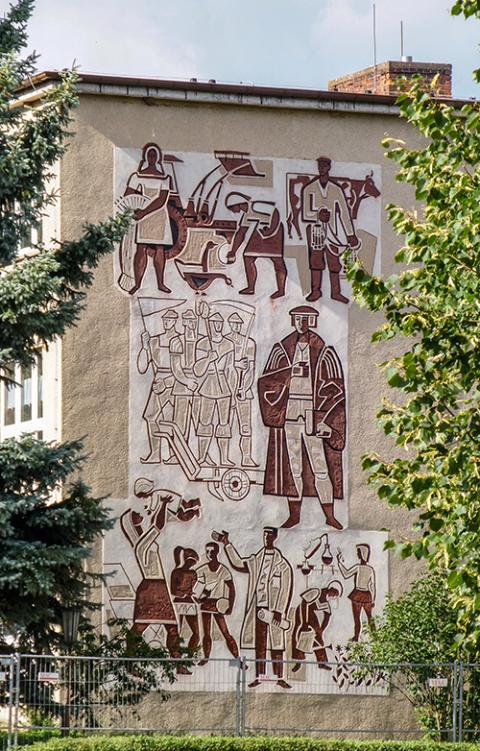
Thomas Müntzer is depicted in an illustration in the 1701 book History of Churches and Heresies from the Beginning of the New Testament to the Year of Our Lord 1688. (North Holland Archives)

Our popular image of the Reformation is of Martin Luther getting angry at the Catholic Church for selling indulgences, nailing 95 theses to a church door, and suddenly a new religion springing forth. In The Dreadful History and Judgement of God on Thomas Müntzer: The Life and Times of an Early German Revolutionary, Andrew Drummond examines a lesser-known figure and paints a picture of a complicated society that was struggling with issues of economic inequality just as much as, if not more than, issues of doctrine.
Thomas Müntzer was born in the late 15th century in Germany and, like the majority of men who would become leaders of the Reformation, was ordained a Catholic priest at a young age. He became an associate of another young priest, Luther, who was preaching controversial ideas in the German university city of Wittenberg.
Quickly, however, their ideas diverged: most crucially, in how they thought people should behave regarding the state. Luther courted German princes and wanted to preserve the existing late medieval feudal order; Müntzer did not.
This would end with Luther being pleased at Müntzer's execution for his role in a German peasant uprising. Müntzer led an army of peasants who not only wanted to smash their church's icons but also wanted to smash the rich and powerful that took unfair amounts of their income in tithes and taxation. Despite some initial success, they were roundly defeated by the state's superior fighting forces.
Luther won, and Müntzer did not. Müntzer's theological descendants were the Anabaptists, a people much less inclined to write history books than Lutherans, and so Luther's depiction of Müntzer as a person aligned with the devil would prevail.

Thomas Müntzer is the largest figure in a mural of farmers, peasants and workers, designed in 1970 by Karl Holfeld, seen on a school in Bodenrode, Eichsfeld, Germany. (Wikimedia Commons/Jan Stubenitzky)
This would continue until the mid-19th century, when Friedrich Engels would cast Müntzer as a proto-revolutionary, and would lead to him being glorified by the 1949-90 communist German Democratic Republic.
Drummond seeks to dispel the caricature and myth created by Lutherans, while also emphasizing that Müntzer's beliefs about rights for the poor were firmly grounded in a theologically centered worldview. The commoner is the Elect, fighting against the godless, whether they be the nobility, the church in Rome or the church in Wittenberg.
The book is set primarily during the last five years of Müntzer's life, between 1520 to 1525. The author is clear to explain, however, that dissatisfaction with the church did not suddenly spring out of nowhere in 1517, detailing an earlier uprising in nearby Bohemia that had influenced the German reformers.
Unhappy peasants, too, were not new: There had already been numerous and also unsuccessful peasant uprisings in the decades before.
To modern readers, who live in a world where the Reformation and Counter-Reformation are long settled, the separation of church and state is a key American value, and a desire for worship in the vernacular rather than Latin is a personal preference, Müntzer's world can feel shockingly alien. He is given a benefice for an altar at a church he doesn't do anything at, and this is normal. Towns are financially obligated to support nearby monasteries. He is not assigned to a parish, but rather a town extends him an offer to be the priest at one of their churches.
The last item feels the most odd, both in that priests are wandering clergymen for hire and that there is not an immediate clean break. Müntzer attends Luther's famous disputation at Leipzig against Johann Eck, and then becomes father confessor at a nunnery. At one point, Luther decides to return to having the Mass in Latin in Wittenberg.
There are radical nonordained preachers wandering around too, but the ordained, reformed priests continue to engage in parish ministry at parishes where the towns have also reformed — although if the priest's theology goes too far, the town will hire someone else.
Advertisement
While waiting for guidance from Rome, the frustrated state says that towns that have reformed can stay that way, but no additional towns will be permitted to do so. This is not a unified country like England, where a more particular theological stance can be enforced, but rather a collection of towns, counties, principalities and dukedoms all under the shaky, distant umbrella of the Holy Roman Empire.
This can occasionally be confusing, but additional details about the precise nature of German civil or ecclesiastical minutiae would distract from the action: the priests getting chased through the streets, the looting of castles, and Müntzer's anger against Luther and anyone else who disagreed with him.
Müntzer does not always come across as the most reasonable person, but the world he lives in is not reasonable. Sometimes peasants are forbidden from going to the urban church to hear the reformed preacher on a Sunday, and sometimes the lord or lady ruling over them will decide to force them away from their fields to do some other task with no concern for the peasant's need to feed their family. An upheaval of the status quo was inevitable in some way.
The author presents an engaging book that gives a tidy primer on Thomas Müntzer. There is enough theology to be informative without becoming inscrutable. The ending is unsatisfying only because the nature of real life, where heroes can lose, is unsatisfying.
The actual final chapter of the book is on the historiography of Müntzer and his reception in the past 500 years, which gives an interesting look at how history gets interpreted and reinterpreted. This is a good book for an English speaker interested in learning more about the early years of the Reformation in Germany on its more radical end.







